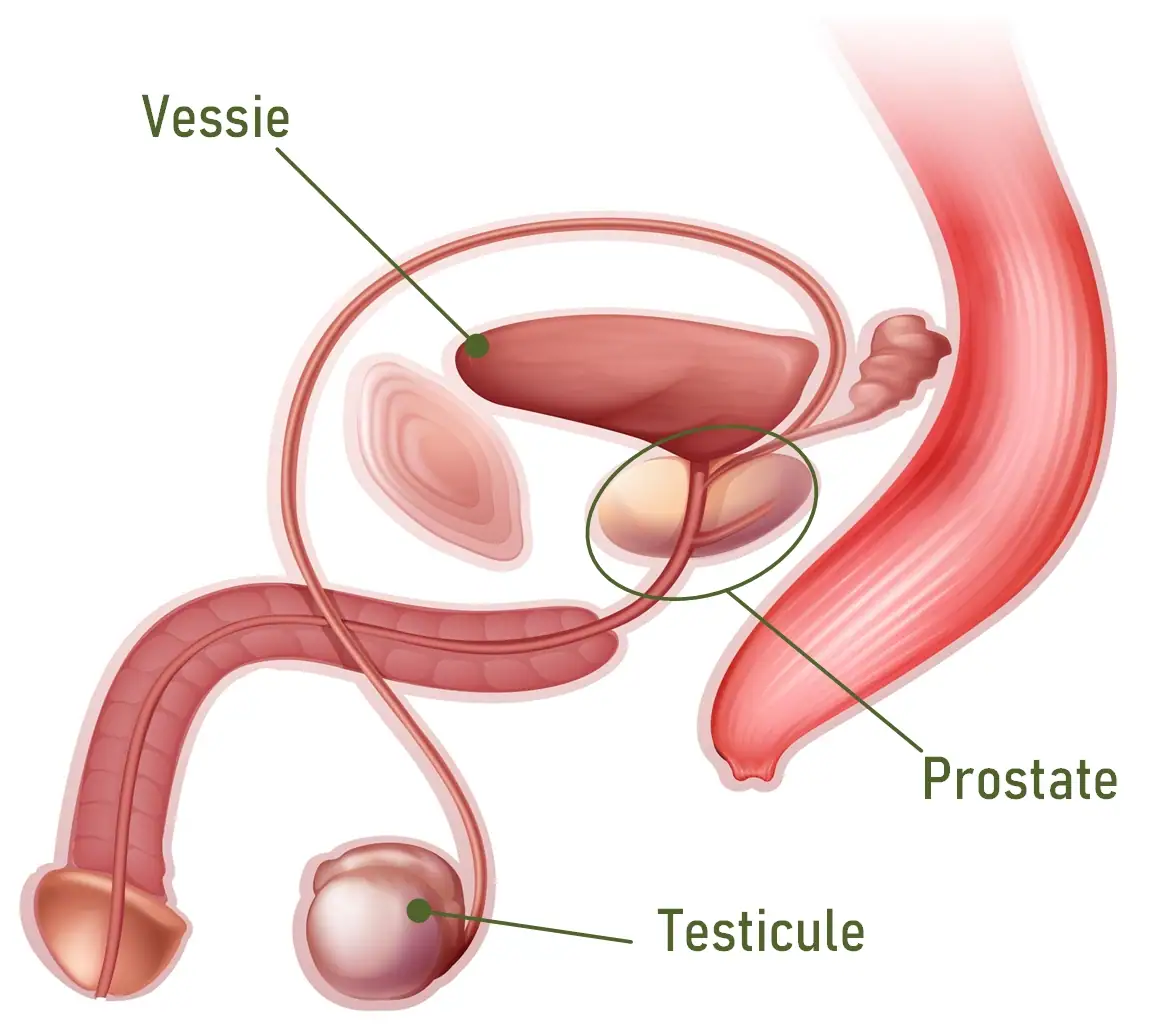Summary :
◉ Définition
Benign prostatic hyperplasia, BPH, is an abnormal enlargement of the prostate gland that can make it difficult to urinate. It is benign, which means it is not cancer and does not lead to cancer. It usually affects men over the age of 50.
The prostate is part of the male reproductive system. This gland, the size of a chestnut, is located under the bladder, in front of the rectal ampulla. It surrounds the outlet duct of the bladder through which urine or semen escapes.
As the prostate grows, it can press against the bladder and pinch the urethra. This can slow or block the flow of urine out of your bladder and cause a predisposition to urinary tract infections and bladder stones.
Several treatment options are available, drugs, surgery or other procedures. Your doctor can help you choose based on your symptoms, your history and the size of your prostate.

Benign prostatic hyperplasia is also called prostatic adenoma or benign prostatic hyperplasia.
◉ Causes of Enlarged prostate
The prostate is a gland that generally continues to grow throughout life. In some people, it becomes large enough to cause problems.
Its precise cause is unknown, but is probably related to hormonal variations. With age, the amount of testosterone decreases and estrogen levels remain the same. These changes can lead to prostate cell growth.
Risk factors
Risk factors for an enlarged prostate include:
- Age: The risk increases with age. Prostate enlargement is rarely symptomatic before the age of 40.
- Family history of benign prostatic hyperplasia
- Certain medical conditions: Obesity, erectile dysfunction, diabetes and heart disease
- Lack of physical exercise
◉ Symptoms of benign prostatic hyperplasia
The first symptoms of benign prostatic hyperplasia occur once the prostate has enlarged to the point of obstructing the flow of urine. This enlargement usually occurs after the age of 45.
- Incomplete emptying: The feeling that your bladder is full, even after urinating. This can cause a feeling of fullness in the lower abdomen.
- Pollakiuria: frequent urination, the prostate can press on the bladder and cause more frequent urination.
- Difficulty starting a stream of urine despite pushing and straining
- A weak, slow stream of urine with several interruptions in flow.
- Nocturia: frequent urination during periods of sleep
- Urinary incontinence
- Pain after ejaculation or during urination
- Presence of blood in the urine (hematuria)
Note
- The size of the prostate does not always determine the severity of symptoms.
- The evolution of symptoms is slow.
- BPH symptoms can also be caused by other conditions, including prostate or bladder cancer and kidney stones
◉ Complications
Complications of an enlarged prostate may include:
- Acute urinary retention: not being able to pee.
- Urinary Tract Infections:
- Bladder stones and bladder injury
- Kidney damage: pressure in the bladder due to inability to urinate can damage the kidneys or spread infection (Pyelonephritis)
◉ Diagnosis of BPH
The diagnosis of prostate adenoma is mainly based on:
- Personal and family history
- A physical examination
- An additional assessment
Medical history
Your doctor will likely start by asking about your symptoms, medications, general medical history, and family history.
Physical examination
A digital rectal examination is a routine examination for diagnosing prostate problems. The doctor inserts a gloved and lubricated finger into the rectum to feel the wall of the prostate, he looks for:
- Hypertrophy.
- A sensitivity.
- If the surface is smooth and even.
- The presence of bumps or hard spots.
In case of benign prostatic hyperplasia, the prostate is not painful on palpation, a larger size and a smooth and symmetrical wall.
Additional testing
These tests confirm the diagnosis and guide treatment.